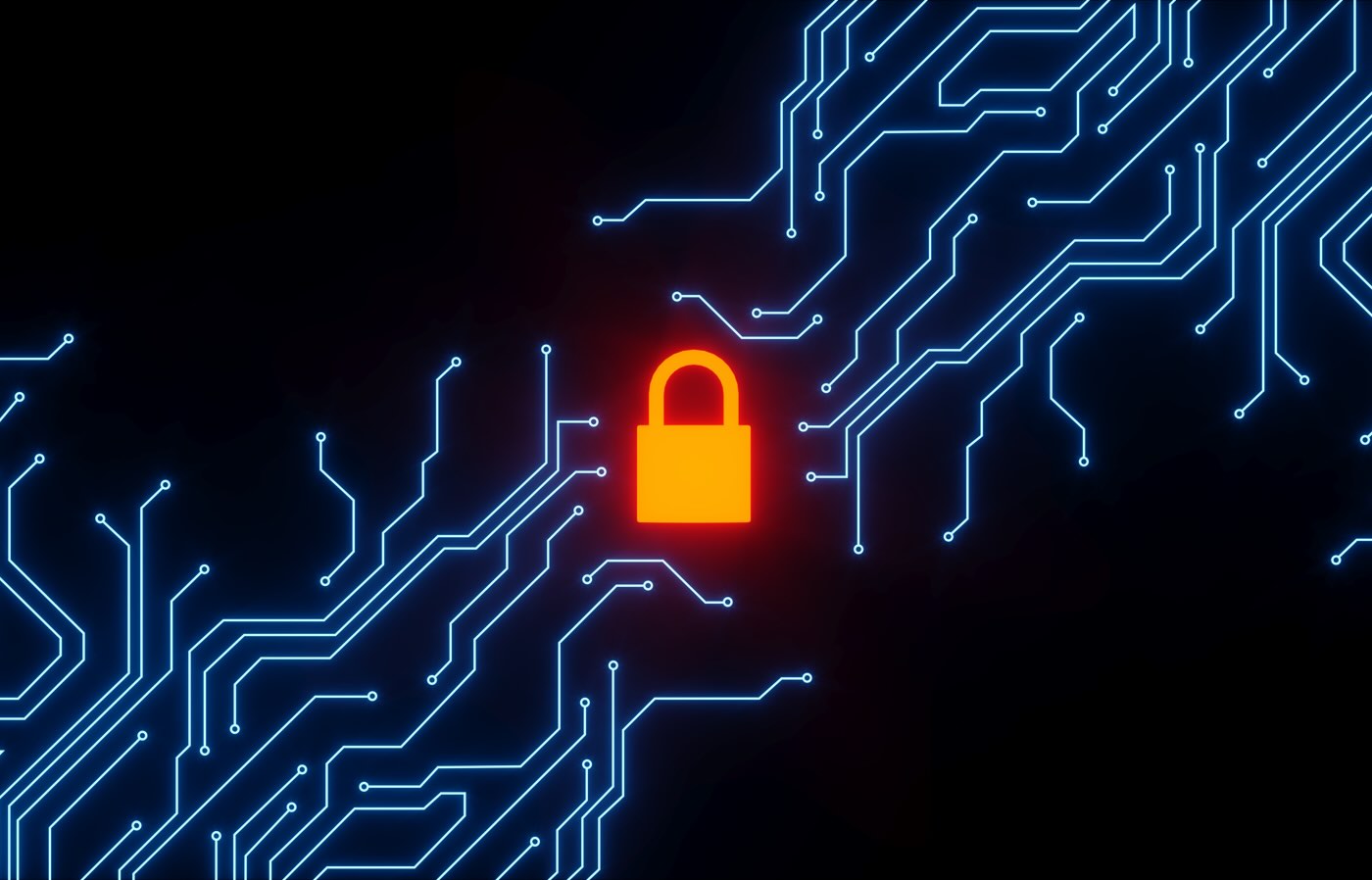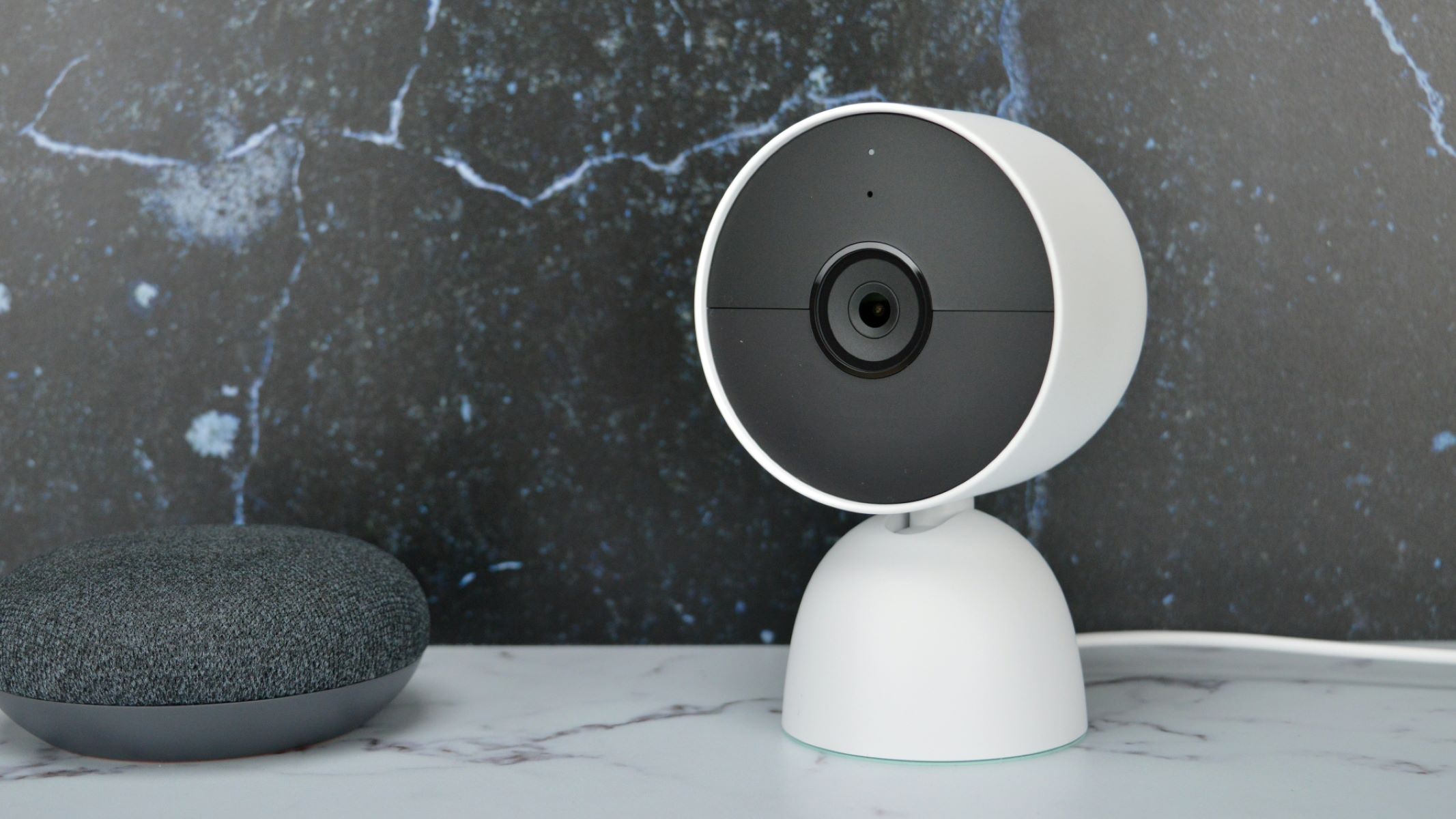Home>Home Security and Surveillance>When Does An Audit Trail Occur When An Intrusion Detection System Overlooks Anomalous Activity


Home Security and Surveillance
When Does An Audit Trail Occur When An Intrusion Detection System Overlooks Anomalous Activity
Modified: October 21, 2024
Learn why an audit trail occurs when an intrusion detection system fails to detect abnormal activity in home security and surveillance. Enhance your protection today!
(Many of the links in this article redirect to a specific reviewed product. Your purchase of these products through affiliate links helps to generate commission for Storables.com, at no extra cost. Learn more)
Introduction
Welcome to the world of home security and surveillance. In this fast-paced, technology-driven era, it has become imperative to protect our homes and loved ones from potential threats. With the increasing prevalence of break-ins and burglaries, it is essential to invest in robust security measures, including intrusion detection systems.
An intrusion detection system (IDS) is a critical component of any home security system. It is designed to monitor and analyze network traffic or system activities to identify unauthorized access, malicious activities, and anomalous behavior. IDS plays a pivotal role in identifying security breaches and alerting homeowners to potential threats in real-time.
While IDSs are undoubtedly valuable tools, they are not infallible. There are instances where these systems might overlook anomalous activity, which can have serious consequences. This is where the concept of audit trails comes into play.
Audit trails, in the context of home security and surveillance, are a valuable and reliable means of capturing and recording detailed information related to system activities and user actions. These trails provide a chronological record of events, including logins, system configurations, and any other relevant activities. Audit trails are instrumental in improving security, aiding investigations, and ensuring compliance with industry regulations.
However, there are scenarios where an intrusion detection system might fail to detect or properly respond to anomalous activity. This article will delve deeper into the factors leading to such oversight and explore the repercussions of overlooking anomalous behavior. Additionally, we will discuss the importance of audit trails in mitigating the risk associated with unnoticed security breaches and ways to effectively manage and analyze these trails to enhance overall home security.
So, if you’re looking to gain insights into how the audit trails and intrusion detection systems work together to protect your home, keep reading! We will unveil the intricacies of this fascinating field and equip you with the knowledge you need to strengthen your home security and surveillance.
Key Takeaways:
- Audit trails are like a security diary for your home. They record everything that happens in your security system, helping you catch bad guys, keep your home safe, and follow the rules.
- If your security system misses something fishy, it could lead to privacy breaches, delayed responses, and even financial losses. By using audit trails smartly, you can avoid these problems and keep your home secure.
Read more: What Is An Audit And Intrusion Detection
Overview of Audit Trails
Audit trails are an essential component of any robust security system, including home security and surveillance. They provide a detailed record of system activities, user actions, and events within the system. These trails consist of logs, timestamps, and other relevant information, providing a comprehensive view of what transpired.
The primary purpose of audit trails is to enable system administrators, security analysts, and investigators to trace and track any security events, unauthorized access attempts, or suspicious activities. By capturing and storing information about system events, audit trails serve as a crucial forensic tool that can aid in incident response, investigations, and compliance audits.
In the realm of home security and surveillance, audit trails play a significant role in identifying and addressing security breaches. By documenting user logins, system configurations, and other relevant activities, audit trails enable homeowners to monitor and review the actions taking place within their security system. This provides transparency and accountability, ensuring that any unauthorized or unusual activities are recognized and responded to promptly.
Moreover, audit trails serve as a deterrent to potential malicious actors. The knowledge that every action within the security system is being meticulously recorded and stored discourages unauthorized access attempts and encourages users to comply with security protocols.
To effectively manage audit trails, various security protocols and best practices can be implemented. These include restricting access to audit trail logs, employing robust encryption methods to safeguard the integrity and confidentiality of the data, and implementing regular review and analysis of the logs for anomalies or suspicious patterns.
By applying these practices, homeowners can leverage audit trails as a valuable resource in ensuring the integrity and effectiveness of their home security and surveillance systems.
In the next sections, we will explore the role of intrusion detection systems (IDS) and the challenges that can lead to the oversight of anomalous activity within these systems. We will also discuss how audit trails can be pivotal in mitigating the risks associated with such oversight and ensuring the overall security of your home.
Intrusion Detection Systems
Intrusion Detection Systems (IDS) are the backbone of home security and surveillance systems. They are designed to monitor network traffic, system activities, and user behavior to identify and respond to potential security breaches in real-time.
There are two primary types of IDS: network-based IDS (NIDS) and host-based IDS (HIDS). NIDS monitors network traffic, analyzing packets and searching for any signs of malicious activity or unauthorized access attempts. On the other hand, HIDS is installed on individual devices and focuses on monitoring activities specific to that device.
These systems utilize a variety of techniques to identify potential security incidents. This includes signature-based detection, where the IDS compares network traffic or system activities against a database of known attack patterns or malicious behaviors. Additionally, anomaly-based detection techniques are employed, which involve establishing a baseline of normal activity and flagging any deviations from that baseline as potentially malicious.
Intrusion Detection Systems are equipped with sophisticated algorithms that can analyze large volumes of data in real-time, allowing them to promptly detect and respond to security incidents. When the IDS identifies suspicious activity, it generates an alert to notify the system administrator or homeowner of the potential threat. This alert can be in the form of an email, SMS, or visual notification, depending on the configuration of the system.
Furthermore, IDS can also prevent potential security breaches by implementing preventive measures like closing network ports, blocking IP addresses, or terminating suspicious connections.
While IDS are highly effective in detecting and preventing security breaches, they are not foolproof. There are certain challenges and limitations that can result in overlooking anomalous activity, which we will explore in the following sections.
Now that we have a general understanding of IDS and their purpose, let’s dive deeper into the concept of anomalous activity and the critical role of audit trails in monitoring and addressing security incidents.
Anomalous Activity Detection
Anomalous activity detection is a vital aspect of intrusion detection systems and home security. It involves identifying and flagging activities or behaviors that deviate from the norm or expected patterns. By detecting anomalous activity, homeowners and system administrators can respond promptly to potential security breaches.
There are various types of anomalous activity that can be detected by IDS. This includes unusual network traffic patterns, such as a sudden surge in data transfer or a high number of failed login attempts. Additionally, IDS can detect unauthorized access attempts, unusual system configurations, or abnormal user behavior, such as accessing sensitive files or running suspicious processes.
To identify anomalous activity, intrusion detection systems employ sophisticated algorithms and statistical analysis techniques. These algorithms learn the normal patterns and behaviors within the system and compare incoming data or events against this baseline. If a deviation is detected, an alert is triggered, indicating a potential security incident.
Anomalous activity detection is not a one-size-fits-all approach. It requires customization and tuning according to the specific environment and security requirements. System administrators need to fine-tune the IDS to accurately separate genuine anomalies from false positives, which are alerts triggered by legitimate system activities that might appear unusual.
Furthermore, anomaly detection can be complex due to the evolving nature of threats and the need to adapt to new attack techniques. Intruders are constantly innovating, finding novel ways to bypass security measures. Therefore, IDS must stay up-to-date with the latest threat intelligence and continuously update their detection techniques.
While intrusion detection systems are effective in identifying anomalous activity, there are instances where such activity might be overlooked, leading to potential security breaches. These oversight scenarios can arise due to various factors, which we will discuss in the next section.
Understanding the challenges that can lead to the oversight of anomalous activity is crucial in strengthening home security systems. It also emphasizes the importance of audit trails as a means to mitigate the risks associated with unnoticed security incidents. Let’s explore these factors in more detail.
Importance of Audit Trails in Intrusion Detection Systems
Audit trails play a crucial role in ensuring the effectiveness and integrity of intrusion detection systems (IDS) in home security and surveillance. They provide a detailed record of system activities, user actions, and events, serving as a valuable source of information for security analysis and incident response.
There are several reasons why audit trails are essential in the context of IDS:
- Forensic Analysis: Audit trails act as a forensic tool that can aid in investigating security incidents. In the event of a breach, forensic analysts can use audit trails to trace the origin and scope of the incident, reconstruct the timeline of events, and identify the actions taken by the intruder.
- Alert Verification: Audit trails help in validating the alerts generated by the IDS. By reviewing the related audit trail logs, system administrators can determine whether the alerted activity is indeed suspicious or malicious. This ensures that resources are not wasted on investigating false positives.
- Compliance and Auditing: Audit trails are crucial for meeting compliance requirements and passing audits. They provide evidence of adherence to security protocols and industry regulations. By maintaining comprehensive audit trails, homeowners can demonstrate their commitment to protecting sensitive information and maintaining a secure environment.
- Detection of Insider Threats: Audit trails enable the detection of insider threats, where authorized users abuse their privileges or act maliciously. By monitoring and analyzing user actions recorded in the audit trail, suspicious or unauthorized activities can be identified and investigated, mitigating the risk of internal security breaches.
- Improving System Performance: Audit trails offer insights into system performance, enabling administrators to identify areas for optimization. By analyzing the logs, administrators can identify patterns of high system activity, resource consumption, or bottlenecks, helping them make informed decisions to improve the overall efficiency and effectiveness of the IDS.
To fully leverage the benefits of audit trails, it is essential to ensure they are properly managed and secured. This involves implementing access controls and encryption mechanisms to protect the integrity and confidentiality of the audit trail data. Regular review and analysis of the logs are also crucial to identify anomalies or suspicious patterns that may indicate security breaches.
By utilizing audit trails effectively, homeowners can monitor the activities within their security system, detect potential threats, respond promptly to incidents, and maintain a secure environment for their homes and loved ones.
In the next sections, we will explore the factors that can lead to the oversight of anomalous activity within intrusion detection systems and the consequences that can arise from such oversight. Stay tuned to learn more about strengthening your home security and surveillance.
An audit trail occurs when an intrusion detection system overlooks anomalous activity, allowing for the tracking and recording of any unauthorized access or suspicious behavior for later investigation.
Read more: When Was Intrusion Detection Introduced
Factors Leading to Overlooking Anomalous Activity
While intrusion detection systems (IDS) are valuable tools for identifying and responding to security threats, there are several factors that can contribute to the oversight or overlooking of anomalous activity. It is important to understand these factors to effectively address and mitigate the risks associated with unnoticed security incidents.
- Incomplete or Inaccurate Baseline: An effective IDS relies on establishing a baseline of normal activity to detect anomalies. If the baseline is incomplete or inaccurate, the IDS may fail to recognize deviations from the norm. This can happen when the baseline is not regularly updated to reflect changing system conditions or when it does not account for certain types of activity.
- Insufficient Log Collection: IDS rely on collecting and analyzing logs to identify potential security breaches. If the logging capabilities are insufficient or improperly configured, important events or activities may not be recorded or may be missed. This can result in the oversight of anomalous behavior and hinder incident response and forensic analysis.
- High Volume of Alerts: IDS can generate a significant number of alerts, especially in environments with high network activity or complex system configurations. The sheer volume of alerts can overwhelm system administrators and lead to the inadvertent overlooking of genuine security incidents among the noise. Proper alert management and prioritization are crucial to avoid missing critical alerts.
- Complexity of Network and System: The complexity of modern networks and systems can make it challenging to identify anomalous activity. With a multitude of interconnected devices and intricate configurations, it becomes harder to distinguish between legitimate and malicious behavior. Additionally, the presence of multiple IDS sensors or overlapping security tools can lead to conflicting alerts, causing confusion and potential oversight.
- Insider Threats: Insider threats, where authorized users abuse their privileges or act maliciously, can be difficult to detect. These individuals may have legitimate access to the system and operate within the boundaries of acceptable behavior, making their actions harder to identify as anomalous. Effective user monitoring and analysis of audit trails can help uncover suspicious behavior associated with insider threats.
To mitigate the risks associated with overlooking anomalous activity, it is crucial to address these factors through appropriate measures:
- Regularly Update Baselines: Continuously update and refine the baseline of normal activity to reflect changes in system behavior and configurations. Regularly review and adjust the baseline to account for new patterns and activities within the network or system.
- Ensure Comprehensive Log Collection: Implement robust logging mechanisms to capture all relevant events and activities within the IDS. Configure the IDS to capture the necessary logs and ensure that log storage and retention comply with industry best practices and regulatory requirements.
- Implement Effective Alert Management: Develop an efficient system for managing alerts, including proper prioritization and categorization. Utilize automation techniques to filter out false positives and focus on alerts that require immediate attention or investigation.
- Simplify and Rationalize Network and System Configurations: Simplify complex network and system configurations to reduce the potential for confusion and conflicting alerts. Ensure that IDS sensors and other security tools are properly coordinated and integrated to avoid oversight due to inefficient collaboration.
- Monitor User Behavior: Implement user behavior monitoring mechanisms to detect anomalous actions by insiders. Regularly analyze audit trails for any suspicious activities or deviations from normal user behavior.
By addressing these factors and implementing appropriate measures, homeowners can significantly reduce the risk of oversight and strengthen their home security and surveillance systems. In the next section, we will discuss when an audit trail occurs and its role in minimizing the consequences of overlooked anomalous activity. Stay tuned!
When Does an Audit Trail Occur?
An audit trail occurs whenever there is an activity or event within a system that is worth recording for security and accountability purposes. In the context of home security and surveillance, audit trails play a vital role in capturing and documenting relevant information related to system activities, user actions, and security incidents.
Let’s explore some common scenarios when an audit trail occurs:
- User Logins and Logouts: Whenever a user logs into or logs out of the home security system, an entry is made in the audit trail. This includes details such as the username, timestamp, and any associated actions performed during the session.
- System Configuration Changes: Any changes made to the configuration of the intrusion detection system or other security components are recorded in the audit trail. This could include modifications to network settings, access control rules, or firmware updates.
- Security Incident Alerts: When the intrusion detection system detects a potential security breach or anomalous activity, it generates an alert. The details of the alert, including the nature of the incident, the affected system or device, and any actions taken, are logged in the audit trail.
- Failed Login Attempts: If someone tries to gain unauthorized access to the home security system and fails, their login attempts are typically recorded in the audit trail. This information can provide valuable insights into potential threats and can be used for analysis and investigation.
- Access to Sensitive Information: Whenever a user accesses sensitive information or performs actions that require elevated privileges, such as viewing security camera footage or modifying system settings, the event is logged in the audit trail. This helps ensure accountability and traceability of user actions.
- System Activity Logs: Various system activities, such as network traffic patterns, system resource usage, or the execution of specific processes, are logged in the audit trail. These logs can be valuable in detecting abnormal behavior or identifying performance issues.
The occurrence of an audit trail depends on the specific security and surveillance system in place. Some systems may have more granular audit trail capabilities, capturing additional information about user actions or system events. It is important to configure the audit trail parameters based on security requirements and compliance regulations.
By capturing these events and activities in the audit trail, homeowners and system administrators can maintain a comprehensive record of system operations and user interactions. This facilitates forensic analysis, incident response, and compliance audits, ultimately enhancing the overall security and accountability of the home security system.
In the next section, we will explore the consequences that can arise from the oversight of anomalous activity and how audit trails can help mitigate these risks. Continue reading to learn more about strengthening your home security and surveillance.
Consequences of Overlooking Anomalous Activity
Overlooking anomalous activity within a home security and surveillance system can have serious consequences, compromising the overall security and leaving homeowners vulnerable to potential threats. It is crucial to understand these consequences to take appropriate measures to minimize the risks. Let’s explore some of the potential outcomes:
- Breach of Privacy: Anomalous activity that goes unnoticed can potentially result in a breach of privacy. Intruders or unauthorized individuals may gain access to sensitive information or compromise the security cameras, allowing them to monitor the daily activities within the home.
- Delayed Incident Response: Overlooking anomalous activity can hinder timely incident response. Security breaches may go undetected for an extended period, allowing intruders to gain further access, cause damage, or steal valuable assets. Delayed incident response can also prolong the impact of the breach and increase the difficulty of resolving the situation.
- Loss of Trust and Reputation: Homeowners rely on their security and surveillance systems to protect their homes and loved ones. If an intrusion goes unnoticed, it can cause a loss of trust in the effectiveness of the security system and the service provider. This can result in reputational damage and impact the perceived reliability of the security infrastructure.
- Financial Loss: Overlooking anomalous activity can lead to financial losses due to theft or property damage. Intruders who go undetected can steal valuable possessions or cause physical damage, which can result in significant monetary losses that may not be covered by insurance policies.
- Regulatory Compliance Violations: Many industries have regulations in place to ensure the security and privacy of their clients’ information. Overlooking anomalous activity can result in violations of these compliance regulations, leading to legal consequences, penalties, and damage to the organization’s reputation.
- Legal and Liability Issues: Failure to detect and address security breaches can expose homeowners to legal and liability issues. If a breach leads to personal injury or damage to others’ property, homeowners may be held responsible for the resulting damages and may face legal consequences.
To mitigate the consequences of overlooking anomalous activity, it is crucial to establish a robust security framework that includes effective intrusion detection systems and comprehensive audit trails. By monitoring and analyzing the audit trails, homeowners and system administrators can identify security incidents in a timely manner and respond appropriately.
Furthermore, regular review and analysis of audit trails can help identify any system vulnerabilities or weaknesses that need to be addressed. It enables homeowners to continuously improve their security measures and adapt to evolving threats.
In the next section, we will discuss how to effectively mitigate the risk of overlooking anomalous activity by leveraging audit trails and implementing best practices in home security and surveillance. Stay tuned!
Mitigating the Risk of Overlooked Anomalous Activity
To mitigate the risk of overlooking anomalous activity within a home security and surveillance system, it is essential to implement effective measures and best practices. By doing so, homeowners can enhance the overall security and reduce the chances of potential threats going unnoticed. Let’s explore some key strategies for mitigating this risk:
- Implement Comprehensive Audit Trail Logging: Ensure that the home security system is configured to capture detailed and comprehensive audit trail logs. This includes recording user activities, system configurations, security incidents, and any other relevant events within the system. Proper logging is crucial for monitoring and analyzing system behavior and detecting anomalous activity.
- Regularly Review and Analyze Audit Trails: Schedule regular reviews of the audit trails to identify any suspicious patterns or activities that may have gone unnoticed. Pay close attention to any potential security breaches, failed login attempts, and unusual user behaviors. Analyzing the audit trails regularly can help identify anomalies and prompt appropriate action.
- Automate Alert Management: Implement automation in managing security alerts to improve efficiency and reduce the risk of missing critical alerts. Employ intelligent systems that can prioritize and categorize alerts based on the severity and relevance of the security incident. This enables quicker identification and response to potential threats while minimizing human error in alert handling.
- Keep Baselines Up-to-Date: Continuously update and fine-tune baseline behavior models within the intrusion detection system. Regularly review and adjust the baseline to reflect changes in system configuration, network traffic patterns, and user behavior. By maintaining accurate baselines, the IDS can more effectively detect deviations and flag potentially anomalous activity.
- Utilize Threat Intelligence: Stay informed about the latest threat intelligence and utilize it to enhance the detection capabilities of the intrusion detection system. Regularly update the IDS with new attack signatures and known patterns of malicious behavior. This enables the system to identify emerging threats and detect previously unseen anomalies.
- Implement User Behavior Monitoring: Monitor user behavior and analyze the audit trail logs to identify any suspicious or unauthorized actions. This can help detect insider threats or compromised user accounts that might otherwise go unnoticed. Implement user activity restrictions and regularly review privileged access to minimize the risk of unauthorized activities.
- Regularly Train and Educate Users: Users play a critical role in maintaining the security of the home security and surveillance system. Conduct regular training sessions to educate users about the importance of following security protocols, recognizing potential threats, and promptly reporting any unusual activities. This helps foster a security-aware culture among users.
By actively implementing these measures, homeowners can significantly reduce the risk of overlooking anomalous activity and strengthen the overall security posture of their home security system. It is also important to stay informed about the latest security trends, emerging threats, and industry best practices to continuously improve the security infrastructure.
Remember, security is a continuous process, and staying vigilant is key to safeguarding your home and loved ones. In the next section, we will summarize the key points discussed and reiterate the importance of audit trails in home security and surveillance. Stay tuned!
Conclusion
Home security and surveillance are paramount in safeguarding our homes and loved ones from potential threats. Intrusion detection systems (IDS) play a crucial role in identifying and responding to security breaches, while audit trails provide a comprehensive record of system activities and user actions. By understanding the importance of audit trails and how to effectively leverage them, homeowners can mitigate the risks associated with overlooking anomalous activity and strengthen their overall security posture.
Audit trails serve as a valuable resource in forensic analysis, alert verification, compliance audits, and detecting insider threats. They provide crucial insights into system behavior, allowing homeowners and system administrators to monitor events, investigate security incidents, and maintain accountability.
Factors leading to the oversight of anomalous activity include incomplete baselines, insufficient log collection, high volumes of alerts, network and system complexity, and insider threats. By addressing these factors through best practices such as regular baseline updates, comprehensive log collection, effective alert management, and user behavior monitoring, the risks associated with overlooking anomalous activity can be significantly minimized.
Overlooking anomalous activity can have severe consequences, including breaches of privacy, delayed incident response, loss of trust and reputation, financial loss, regulatory compliance violations, and legal and liability issues. By proactively managing audit trails and implementing the necessary measures, homeowners can reduce the likelihood of these consequences and ensure a more secure home environment.
To effectively leverage audit trails, homeowners should focus on implementing comprehensive logging, regularly reviewing and analyzing the logs, automating alert management, keeping baselines up-to-date, utilizing threat intelligence, implementing user behavior monitoring, and conducting regular user training and education.
Remember, security is an ongoing journey, and staying informed about emerging threats, evolving best practices, and technological advancements is crucial. By maintaining a proactive approach to home security and surveillance, homeowners can stay one step ahead of potential threats and protect their homes and loved ones with confidence.
So, take the necessary steps to strengthen your home security system, leverage the power of audit trails, and enjoy the peace of mind that comes with knowing your home is well-protected.
Frequently Asked Questions about When Does An Audit Trail Occur When An Intrusion Detection System Overlooks Anomalous Activity
Was this page helpful?
At Storables.com, we guarantee accurate and reliable information. Our content, validated by Expert Board Contributors, is crafted following stringent Editorial Policies. We're committed to providing you with well-researched, expert-backed insights for all your informational needs.













